The jerseys of the 2024 Tour de France
Details of the four iconic leader's jerseys and the minor prizes at the race explained
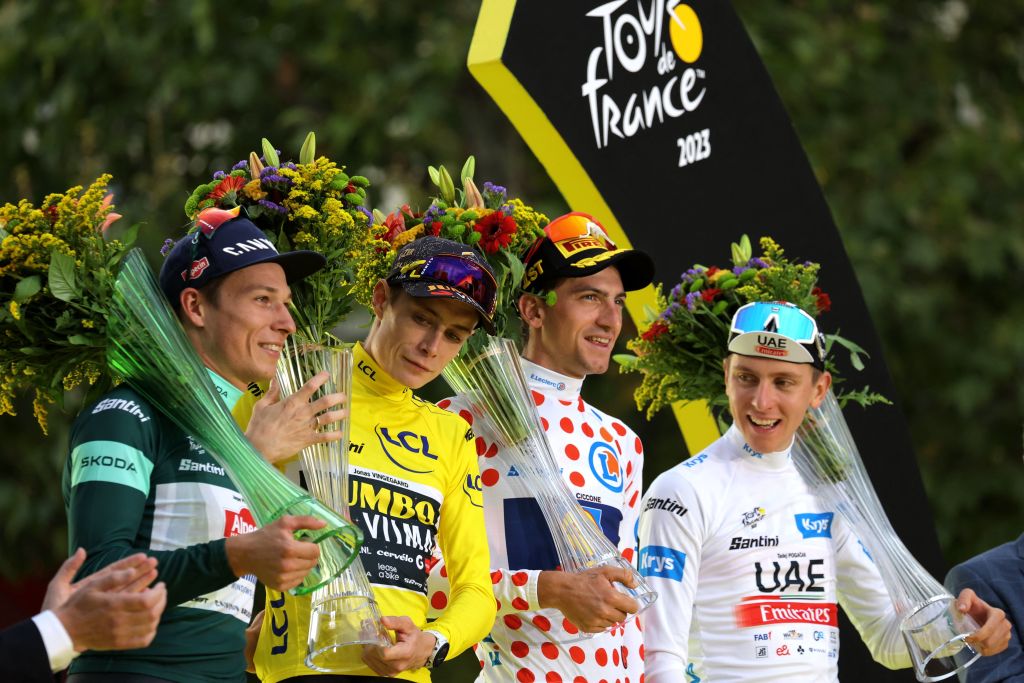
There are four Tour de France classification jerseys awarded after every stage of the three-week race, each recognising different successes and talents in the race.
The iconic yellow jersey is worn by the race leader based on time, the green jersey is awarded to the leader based on points awarded at intermediate sprints and the finishes, the red polka-dot king of the mountains jersey is based on points awarded on categorised climbs, while the white best young rider's jersey is another based on time, but reserved for riders born after January 1, 1999.
The team classification is also based on time, with the riders of the leading team racing with special yellow numbers (dossards). The most aggressive rider wears a special gold number during the following stage.
The most aggressive rider (super-combatif) of the whole race is selected by members of the jury at the end of the Tour de France and is awarded a trophy on the final podium in Paris just like the other competition winners.
Santini is the official jersey maker for the Tour de France, and will put the finishing touches – adding all necessary logos – to the winners' jerseys on-site at the Tour de France. That also means fans can buy their own replica jerseys and other Tour de France merchandising.
What is the Tour de France yellow jersey? Explaining the general classification maillot jaune
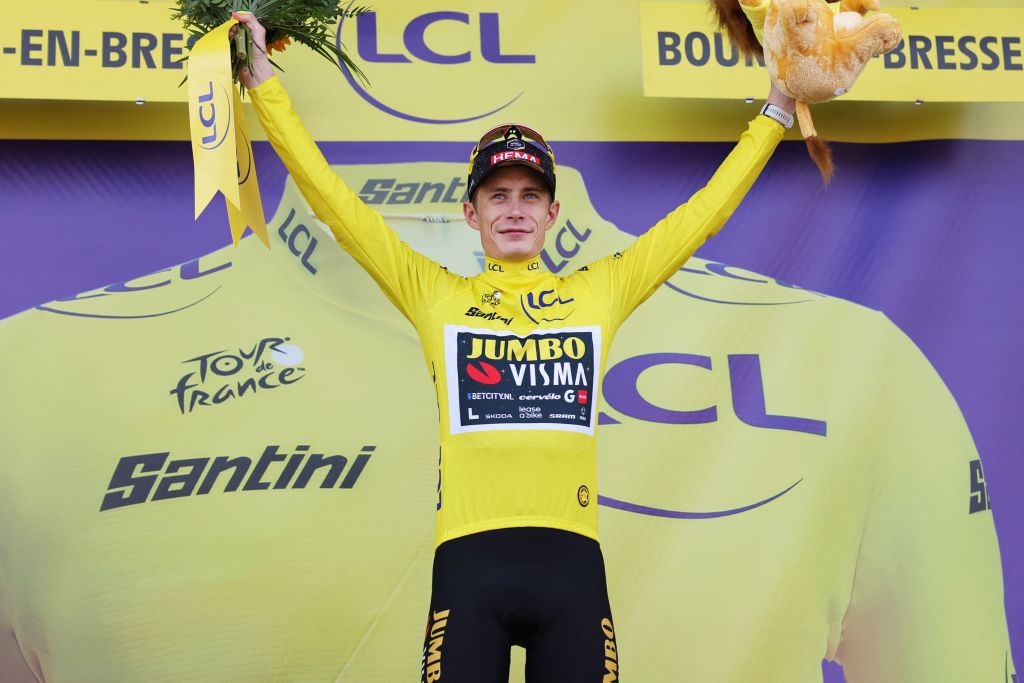
The yellow jersey is worn by the leader of the general classification, the rider with the lowest net time in the race after every stage. The rider who takes it to Paris is crowned the Tour de France winner, the most prestigious success of the men’s cycling season.
Jonas Vingegaard (Jumbo-Visma) won the 2022 and 2023 Tour de France.
Get The Leadout Newsletter
The latest race content, interviews, features, reviews and expert buying guides, direct to your inbox!
The jersey is yellow because the newspaper that first organised the race, L'Auto, was printed on yellow paper.
The classification is based on the time taken for each rider to cover the 21 stages, taking into account time penalties and time bonuses.
In the event of a tie in the general classification, the hundredths of a second recorded by the timekeepers during the individual time trial stages will be included in the total times in order to decide the overall winner.
In the absence of a time trial or if the riders remain tied, then the positions in which they finished each stage will be added up and, as a last resort, their finishing position on the final stage will be taken into account.
Bonus seconds are offered to encourage attacking racing and these are deducted from the time taken to cover the stage. Bonuses of 10, 6, and 4 seconds are awarded on the finish line to the leading three riders on each stage, excluding time trials. There are also certain climbs with bonuses of 8, 5, and 2 seconds at the top to encourage aggressive riding from the favourites.
All riders must finish within the time limit – a certain percentage (ranging from 104% to 120% depending on the stage and average speed) of the stage winner's time each day in order to continue in the race. This is often a problem for sprinters, domestiques and injured riders when it comes to the high mountains.
What is the green jersey in the Tour de france? The rules of the maillot vert
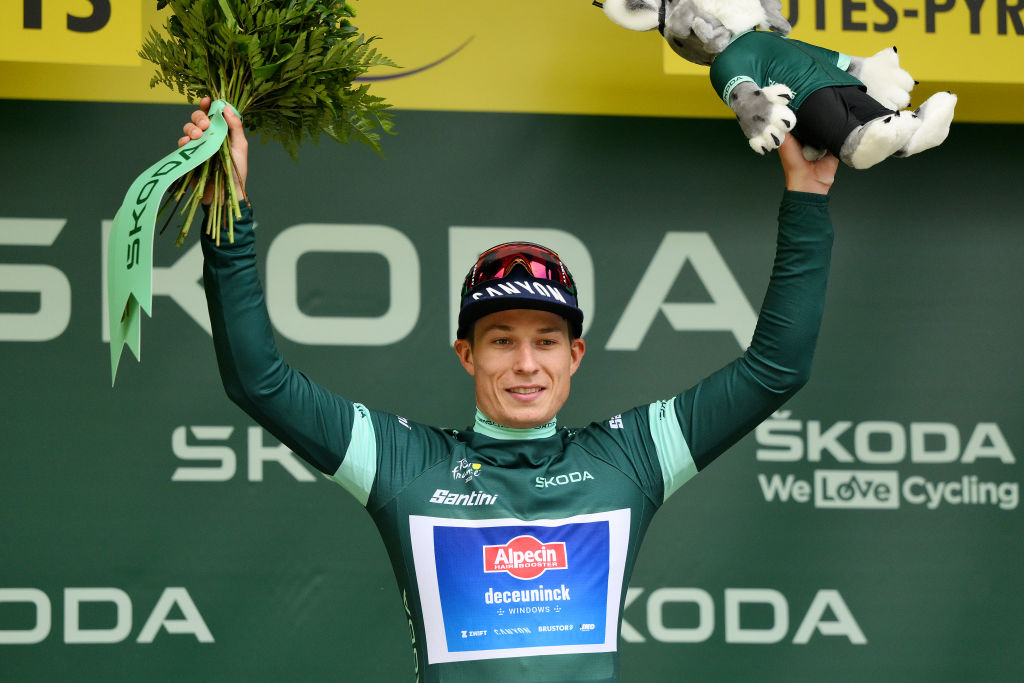
The green jersey is worn by the leader of the points classification. Points are awarded at stage finishes and intermediate sprints.
While the sprinters are the main candidates for the green jersey, it's the more versatile among them who have the best chance of overall success in Paris.
Peter Sagan is one such rider and has won green in seven of the past nine Tours, while Wout Van Aert dominated the points classification in 2022 to take his first green jersey. Jasper Philipsen won four sprint stages to anchor his green jersey in 2023.
Points are awarded to the first 15 riders at stage finishes or intermediate sprints, with different allocations depending on the nature of the stage. More points are awarded on flat stages than on mountain stages or time trials. The winner of a flat stage scores 50 points, a mountain stage winner just 20.
Only riders who complete the entire Tour de France are included in the points classification.
In the event where a rider or riders finish outside the time limit but are reinstated by the president of the commissaires’ jury, they will lose all points awarded to them in the points classification.
For 2023 the green jersey was a much darker shade of green than fans are used to as per a request made by the sponsor of the jersey, Skoda, but the colour was not popular with fans.
What is the polka-dot jersey? Explaining the maillot blanc à pois rouges
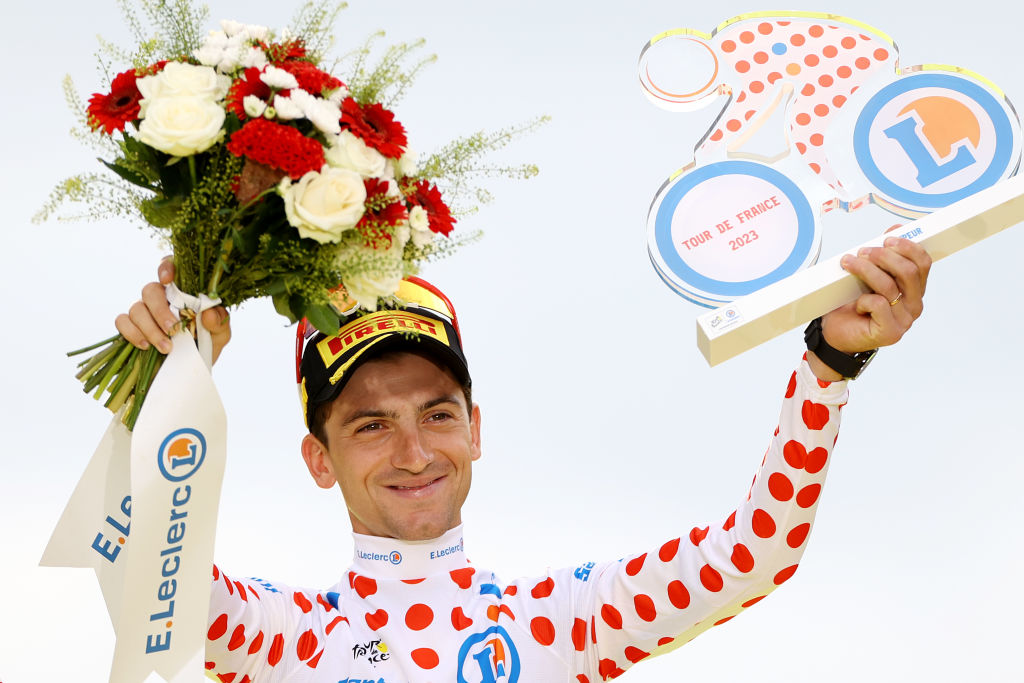
The polka-dot jersey is worn by the leader of the mountains classification, who is known as the 'king of the mountains'. For the three recent editions of the Tour, the overall winner has also won the polka-dot jersey, but Italy's Giulio Ciccone of Lidl-Trek won the competition in 2023.
Mountain points are on offer at the top of every classified climb, ranging from the hardest – 'hors catégorie' – to the easiest – category 4.
Hors catégorie: 20-15-12-10-8-6-4-2
Category 1: 10-8-6-4-2-1
Category 2: 5-3-2-1
Category 3: 2-1
Category 4: 1
In the event of two riders being equal on points, the rider with the most first places at the summit of super-category passes or climbs or summit finishes will be declared the winner.
Only riders who complete the entire Tour de France will be included in the best climber classification. In the event of a rider or riders finishing outside the time limit but being reinstated by the president of the commissaires’ jury, they will lose all points awarded to them in the best climber classification.
What is the white jersey? Explaining the maillot blanc
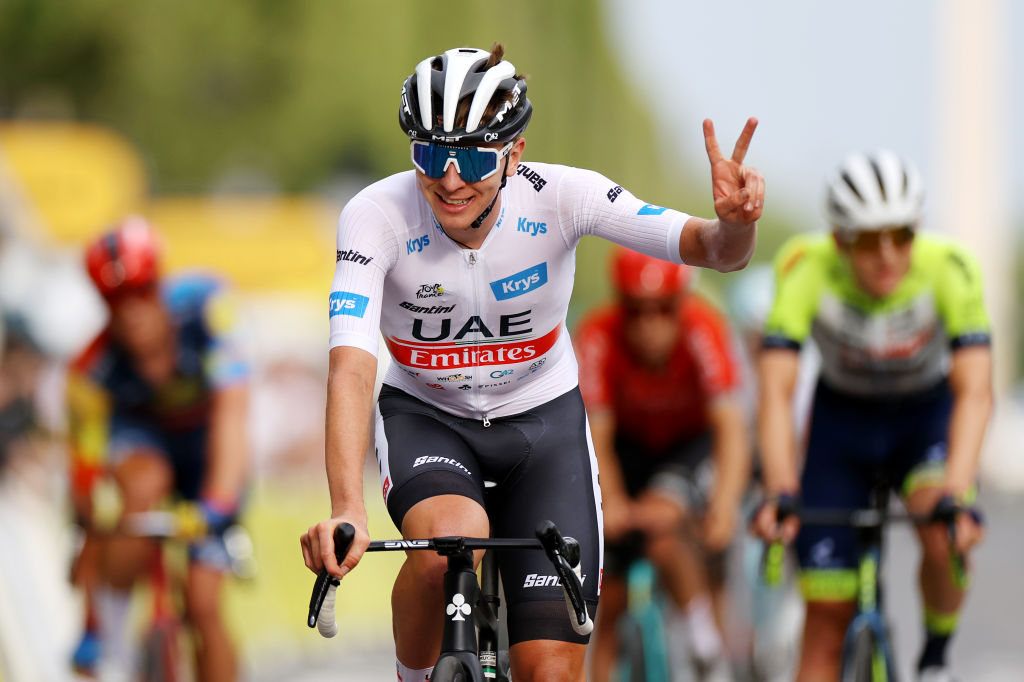
The white jersey is worn by the leader of the youth classification.
A 'young rider' is anyone who was born after January 1, 1999, so anyone under 25 at the start of the year. The jersey goes to the best placed on general classification, based on time.
Tadej Pogačar has won the white jersey at the last four editions of the Tour, alongside the yellow jersey on two occasions.
The white jersey often used to be an indication of future Tour de France contenders, but since Pogačar has risen to greatness at such a young age, it's been difficult to see the future contenders so obviously. He is now too old for the competition, with the white jersey up for grabs in 2024.
What is the gold dossard?
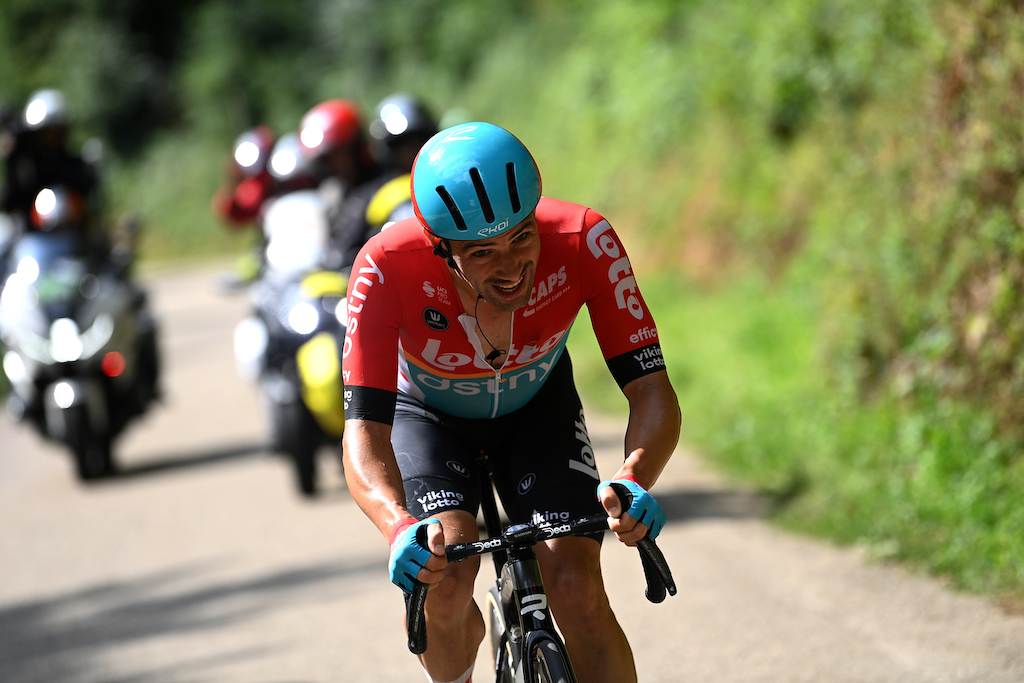
The special gold number dossard is awarded to the rider deemed, subjectively, the ‘most combative’ the previous day. It is usually the rider most active in the breakaway or someone who shows panache and aggression, or even qualities of sportsmanship. It used to be a red number, but has changed this year as Century 21 now sponsor the classification and the new colour runs in line with their branding.
The prize, which is awarded on every road stage except the final one, is decided by a jury presided over by the race director and a new vote made by members of the Tour de France Club. Each stage’s most aggressive rider wears a gold race dossard during the following stage.
The race’s most aggressive rider (super-combatif) is selected by members of the jury at the end of the Tour de France and was won by Victor Campenaerts (Lotto Dstny) in 2023 after a number of aggressive attacks on stages.
What is the yellow dossard?
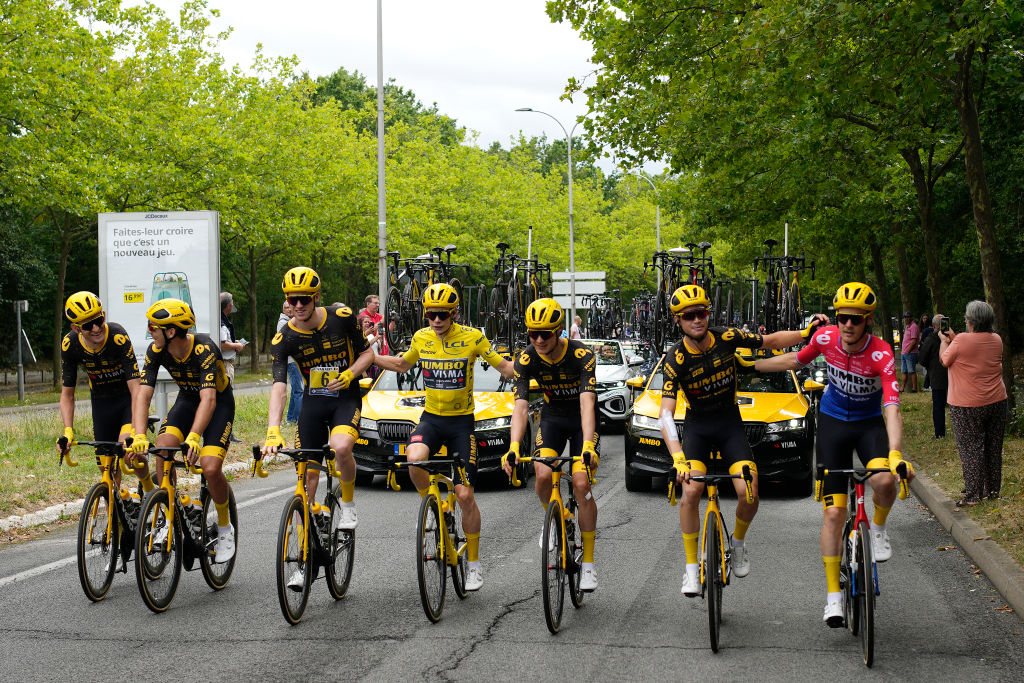
The yellow race number dossard is worn by members of the team leading the teams classification. It is calculated by adding together the times of each team's three best riders on every stage.
Any team reduced to fewer than three riders will be eliminated from the team classification.
Wearing a leader’s jersey is mandatory from the signing-in protocol before the stage start until the post-stage press conference.
Skinsuits are provided to the leaders of the various rankings for time trial stages, with special fitting sessions arranged the day before the time trials.
Riders can lead multiple jersey classifications but only wear one jersey in the race. There is an established order of priority for the different leader’s jerseys: the yellow jersey, followed by the green jersey, then the red polka-dot jersey and finally the white jersey.
When a rider is leading several classifications, they wear the one designated by the order of priority. The other jerseys are then worn by the riders lying second, third or fourth in the corresponding classification.

Stephen is one of the most experienced member of the Cyclingnews team, having reported on professional cycling since 1994. He has been Head of News at Cyclingnews since 2022, before which he held the position of European editor since 2012 and previously worked for Reuters, Shift Active Media, and CyclingWeekly, among other publications.